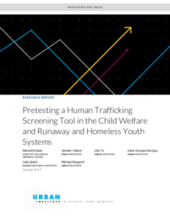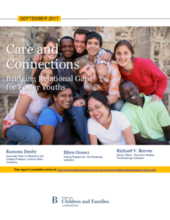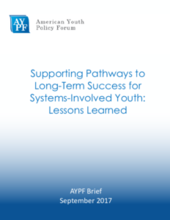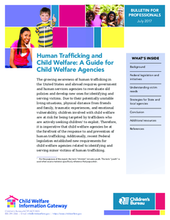Displaying 291 - 300 of 437
Aiming to assist providers to identify and better serve the needs of youth victims of human trafficking, this study developed and pretested a Human Trafficking Screening Tool used to identify youth in the child welfare system and runaway and homeless youth who have experiences of trafficking,
This report explores the challenges of implementing and evaluating relationship-based interventions for young people with experience in the U.S. foster care system and presents recommendations for both practitioners and researchers for successful implementation and evaluation in the future.
This report explores federal programs available to support youth aging out of foster care in the US.
This study explores the possibility that early care and education (ECE) services (e.g., child care, preschool, day care) can help the Child Welfare System achieve its goal.
This paper describes and analyzes the implementation of trauma and evidence-informed interventions in three federally-funded statewide demonstration sites in different regional contexts throughout the United States.
This brief is a compilation of lessons learned from American Youth Policy Forum's (AYPF) last two years of work focused specifically on systems-involved youth.
This paper offers recommendations for child welfare professionals, caregivers and systems to use the research on adolescent brain development to work effectively with youth in or emerging from foster care.
This study observes foster care re-entry for young people whose families participated in Cottage Housing Incorporated's Serna Village Program (CHI), a supportive housing program serving homeless families in Sacramento, California.
This book draws on over 20 years of work in foster care, along with current attachment research and theory, to question traditional foster care models, make recommendations for improved models of care and interventions, and aid social workers and care professionals to better understand families in crisis and inform their practice.
This bulletin is intended for child welfare agency leadership in the US and explores how child welfare agencies can support children who have been victimized as well as children that are at greater risk for future victimization.





